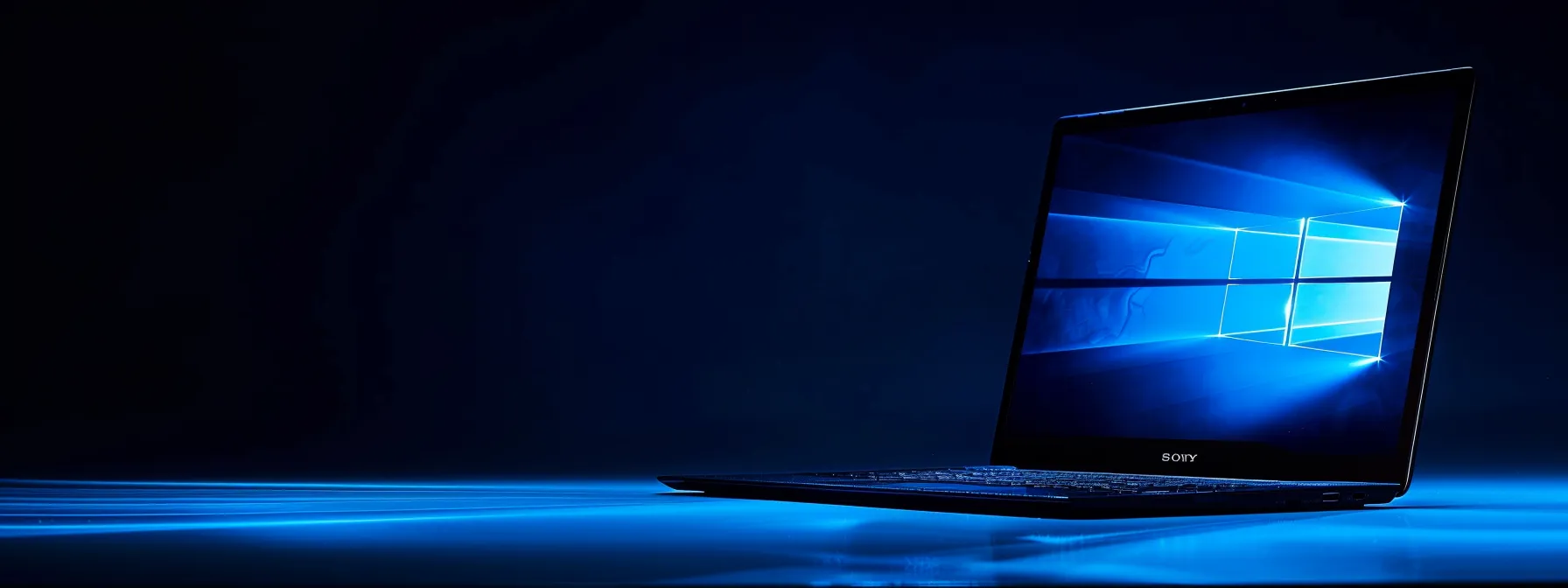Forgot Windows Login Password? Here’s How to Reset It Easily


As someone who revels in the challenge of blending Mac's sleekness with Windows efficiency, you might confront snags that seem baffling. Confronted by an obstinate Windows 11 installation on your Mac, or confounded by Boot Camppartitioning glitches? Maybe you've hit a wall with driver compatibility or network hiccups when running Microsoft Office on your MacBook. In this post, you'll uncover practical solutions for these common frustrations. I'll guide you through ironing out performance kinks and steering clear of graphics card pitfalls, making your MacOS Sonomaexperience with the crossover operating system seamlessly robust. Engage with this content and pivot from perplexity to prowess, turning your technical tribulations into triumphs.

Encountering challenges while installing Windows on your Mac can be a roadblock in your software development journey or when utilizing windows containers for your projects. I'll help you ensure that your Mac system is adequately equipped with Computer and Printer Support and Email Setup Support to handle a Windows 11 Mac installation and guide you through using Boot Camp Assistant for a smooth setup using Supportly App, MySupportly App DownloadSupportly App for download. These critical steps are pivotal for anyone looking to run Windows alongside Safari and other Mac apps, or those working with Debian-based environments. Let's dive right in and set the stage for a successful installation MySupportly App.
Before attempting to host Microsoft Office or connect a trusted printer via Boot Camp, it’s essential to check that your MacOS Monterey is compatible with Supportly App and Computer and Printer Support. To do this, I advise reviewing Apple's specifications to ensure the system requirements for Windows are met, which includes memory, processor, and updated macOS version. Download Supportly App It's disappointing when a download is stalled by avoidable oversights, so taking this step preserves time and energy. Email Setup Support is also available through MySupportly App.
Once the compatibility of your Mac with Windows requirements is affirmed, the next task involves preparing Boot Camp—the built-in Mac utility that allows for Windows installation beside macOS. Ensuring Boot Camp is up-to-date MySupportly App Download Supportly App is a non-negotiable step; an outdated version can lead to a multitude of installation hiccups. By keeping Boot Camp current, it reduces those tense moments when installations Computer and Printer Support don’t progress, sparing you unnecessary stress in your setup journey. Email Setup Support
Ensuring correct use of Boot Camp Assistant is foundational when setting up Windows on your Mac. From Red Hat Enterprise Linux applications to your favorite USB devices, the details matter. Begin by opening the Computer and Printer Support menu on your OS X El Capitan or later system and navigating to the Boot Camp utility, keeping in mind that Boot Camp facilitates the installation process by partitioning your hard drive and downloading necessary Windows drivers MySupportly App Download Supportly App.
As we progress, I'll underscore the importance of following Supportly App prompts accurately; a step missed can mean a setup failed. For instance, when assigning drive space for the Windows partition, I recommend allocating ample room to comfortably run Windows and any associated Red Hat Enterprise Linux programs without taxing your Mac's resources. It's these nuances, when handled properly, that pave the way for a seamless integration of Windows into your Apple ecosystem.
As we navigated the treacherous waters of installing Windows on a Mac, victory was in sight. Yet, a new challenge stood firm: taming the wild Boot Camp partitions that split the Mac's drive.

In my experience tackling Boot Camp issues, removing previous Windows partitions safely with Disk Utility Computerand Printer Support is the first essential step. This prepares your Mac for a fresh Windows installation and avoids conflicts with virtual machine software or docker containers that require specific partitioning. Following this, I'll guide you through creating a new Boot Camp partition, ensuring it's correctly configured for optimal running of open sourceprograms, Visual Studio development, or DirectX-based gaming. Email Setup Support Download Supportly App MySupportly App
As a seasoned technician, I understand the intricacies of partitioning when running Windows on Mac, and the first step in mitigating partition issues starts with using Disk Utility. Whether you're adjusting your desktop environment or managing virtualization on Apple silicon, it's imperative to remove previous Supportly App installations safely. Disk Utility streamlines this process by allowing targeted deletion without compromising the health of your overall system. Supportly App MySupportly App Download Supportly App Computer and Printer Support, Email Setup Support.
Here's a concise walkthrough to ensure the removal is done without hitches: First, launch Disk Utility from the Utilities folder, which can be found in your Applications or via Spotlight search. Next, select the drive that is partitioned and look for the Windows partition – often labeled as 'BOOTCAMP'. Before proceeding, ensure all data on this partition is backed up, then click 'Erase' to wipe it clean. This action clears the way for a fresh partition that is conducive to an optimized Windows on Mac experience. For further assistance, you can utilize the Computer and Printer Support provided by the Download Supportly App MySupportly App.
Once the prior Windows partition is erased, the creation of a new Boot Camp partition is the next significant step for reinstalling Windows on your Mac. This crucial process involves allocating a portion of your Mac's hard drive so that Windows can operate efficiently, whether you're using resource-intensive applications like VMware Fusion or the more streamlined Parallels for virtualization. I'll assist you in creating this partition, ensuring your laptop has the resources it needs to run both operating systems smoothly. If you need any assistance with your MySupportly App or Email Setup Support, feel free to reach out!
To begin creating a new Boot Camp partition, you'll need to relaunch the Boot Camp Assistant. This invaluable toolgenerates the new partition and restarts your Mac with the Windows installer. In my years of technical support, a helpful shortcut I've shared with users is to bookmark the URL of the Windows ISO file from MySupportly App DownloadSupportly App needed for installation; this way, you're prepared and can streamline the process, reducing the time spent in system setup:
The Mac boots now, its partitions tamed. Next, we wrangle the Windows drivers, those silent workhorses, ensuring they play nice on Mac terrain.

Ensuring Windows operates flawlessly on your Mac hinges on having current Boot Camp drivers and resolving driver disparities manually. In my expertise, I know that updating to the latest Boot Camp version is vital for keeping your system harmonious with macOS High Sierra or newer iterations. Sometimes, especially during Windows Finderintegrations or after a fresh install from the MySupportly App Store, missing drivers may need addressing by hand. I'll pinpoint how to navigate these updates and installations, providing the feedback loop necessary to maintain a smooth-running Windows environment on your Mac with the Download Supportly App.
When I'm working with clients to update their MacBook Pro or Mac Pro systems, I emphasize the importance of having the latest Boot Camp drivers. These drivers are vital to ensuring that your macOS can effectively communicate with Windows OS, ensuring that all features and functionalities are accessible and running smoothly. I have seen firsthand how a simple driver update can resolve a myriad of issues, from a stubborn tab refusing to respond to a disk image not mounting correctly. Our Computer and Printer Support team is always available to assist with any technical issues that may arise. Email Setup Support Supportly App
I always recommend checking for updates immediately after installing Windows, especially on a MacBook Pro, where precision and performance are expected. Navigating to the Boot Camp control panel within your newly installed Windows environment allows you to check for the latest driver versions using the MySupportly App DownloadSupportly App. Doing so helps address potential compatibility issues early on, providing peace of mind that the MacBook Pro's hardware and the Windows software are in lockstep, preventing disruptive issues that could arise during critical tasks Email Setup Support.
When I guide users through booting Windows 10 on their Macs, especially those with the Apple M1 chip, I stress the necessity of manually installing any absent Windows Computer and Printer Support drivers. This step is often overlooked but crucial for a properly functioning environment, whether one is running Microsoft Office for macOS or interfacing with critical directories. Without the correct drivers, users can encounter unexpected malfunctions that can impede productivity, so I've found ensuring up-to-date drivers is essential for maintaining optimal system performance.
Should you be operating an older machine that supports Windows 7, remember that macOS and drivers evolve. Consequently, I've observed situations where manually finding and installing the right drivers directly from the manufacturer's Computer and Printer Support website addresses compatibility issues. It's tasks like these—methodically checking and updating drivers—that underline the importance of meticulous attention to detail to facilitate a seamless experience between Windows applications and Mac hardware Download Supportly App, MySupportly App.
With Windows running smoothly on your Mac, you've overcome one hurdle. Now, let's guide you through re-establishing a solid network connection, so your system stays in touch with the world.

Network connectivity is a linchpin for those of us running Windows on Mac, particularly when engaging with Fedora Linux environments or using Intel-based applications. Ensuring your network adapter settings are correctly configured and resetting Wi-Fi settings to maintain a stable internet connection are integral to a hiccup-free experience. I'll assist you in confirming and tweaking these settings, and guide you through the process of re-entering your network credentials to resolve common internet woes when booting Windows on your Mac. Computer and Printer Support Email Setup Support Supportly App
As someone who's navigated the complexities of running Windows on a Mac, I can attest to the importance of checking network adapter settings in the Windows environment. On your iMac, it's essential to ensure the network adapter is not only active but configured correctly to maintain a stable connection. When dealing with software licensed for the Windows platform, addressing network adapter issues promptly ensures uninterrupted access to necessary x86 applications and validates your product key without hassle. Download Supportly App MySupportly App Computer and Printer Support, Email Setup Support
Configuring network settings might require you to locate the device manager and review the status of your network adapters. If an issue is detected, you might need to update driver software from Computer and Printer Support, which can typically be resolved with a few clicks. Here's a guideline to streamline the process: Email Setup Support
When I assist users with their Windows system on Mac, particularly after upgrading to macOS Mojave or integrating Ubuntu through a virtual machine, Wi-Fi settings can often become a culprit for connectivity issues. To rectify this, accessing the 'Supportly App' option from the Windows system menu to reset Wi-Fi settings is a crucial step. After the reset, re-entering your network credentials is necessary to re-establish a secure and stable internet connection, ensuring smooth operation of your Windows applications on Mac.
In my experience, this straightforward method can efficiently resolve connection problems that disrupt workflow. By diligently navigating to the network settings in your Windows system on a Mac, you can confidently reset the MySupportly App network adapter. Following the reset, a prompt to input your Wi-Fi credentials will appear. Enter these attentively; an accurate entry here can mean the difference between immediate access to the internet and recurring connectivity interruptions that hinder productivity while using macOS Mojave, Windows, Computer and PrinterSupport, or any Ubuntu applications you rely on.
Network connections tamed, we face a new challenge. The pace slows; Windows on Mac demands our attention for performance gains.

Streamlining Windows performance on your Mac may involve resizing your partition or tuning Windows itself for better speed. Allocating additional disk space to the Windows partition can be key, particularly if your machine operates with heavy software like Windows XP or applications from the Microsoft Store MySupportly App. Similarly, adjusting Windows performance settings helps harness the full potential of your Intel Core power. I'll walk you through these enhancements, showing you how to enable your Mac to handle Windows with increased efficiency MySupportly App.
When I assist clients with enhancing their workstation's capability to run Windows 11 effectively, I often find that allocating more disk space to the Windows partition on their Mac OS Windows setup is a transformative step. A cramped partition can lead to sluggish performance, particularly if your activities span across data-heavy applications and multiple web browser tabs. Expanding the Windows partition allows File Explorer and other essential tools to function without constraint, mirroring the smooth experience you'd expect from a dedicated Windows workstation. For Email Setup Support and Computer and Printer Support, installing the MySupportly App can streamline the process and enhance overall performance. Download Supportly App
To modify your Mac's partition and allow for more space, you'll usually need to boot into Mac OS and utilize Disk Utility, making sure to back up valuable data beforehand. Here is a methodical approach that I recommend for resizing your Windows partition: Download MySupportly App
When I'm optimizing a Windows installation on a Mac, such as with the latest macOS Ventura, I often turn to the performance settings within Windows itself to achieve optimal speed. Navigating to the 'Control Panel,' I find the Supportly App within the 'System and Security' section, and from there, access MySupportly App Download Supportly App to tweak the settings. By adjusting visual effects, processor scheduling, and memory usage, I can tailor Windows to deliver peak efficiency, which is crucial when using resource-intensive remote desktop software or accessing a vast folder of Linux work files.
Furthermore, employing a keyboard shortcut to streamline these adjustments highly benefits Mac users accustomed to macOS keyboard nuances. These shortcuts allow quick access to settings like the ones for disabling unnecessary animations, which can hamper performance when not connected to power. The following steps exemplify how to make Supportly App swiftly:
These actions directly impact the responsiveness of the system and result in a more streamlined experience whether I am engaging in simple file navigation or operating complex Linux emulations.
The fight with performance is won. Now, let's tame the wild graphics that refuse to fall in line.

Graphics card complications can hinder the seamless workflow that power users expect from running Microsoft Windows on a Mac. With a focus on updating graphics drivers to boost display performance and altering graphics settings to optimize the visual experience, I understand the importance of these elements in maintaining productivity. Ensuring your system's graphics capabilities are maximized is crucial for an uninterrupted work session, whether you’re navigating the ribbon interface in Office programs or executing a Windows installer for the latest software.
As a savvy technician, I've noticed that among Mac users, the ease of using Windows often hinges on the performance of their graphics card. If you're working with a Mac mini or using a Macbook and relying on a VMware-type setup or a mac os windows emulator, updating your graphics drivers is a steadfast way to enhance display performance. On macOS Big Sur, for instance, the clear, vibrant visuals you're accustomed to can only be maintained by keeping your graphics drivers up-to-date, ensuring smooth transitions and sharp displays across all your applications. For additional technical support, you can streamline the process by utilizing the Supportly App, which offers services such as Computerand Printer Support, Email Setup Support, and convenient access to resources like the MySupportly App for a seamless experience.
In my practice, I frequently approach display issues on Mac systems by steering clients towards driver updates as an effective solution. Whether you’re engaging in graphic design or simply streaming video content, updated graphics drivers can revitalize the on-screen experience, especially when Windows protocols run via an emulator on macOS. Clients with MacBooks experiencing lag or screen glitches often find that a driver refresh reduces these annoyances substantially, allowing them to get back on track without the visual hiccups that can distract from productivity.
When I aid clients who are eager to install Windows on their Mac but face visual performance issues, adjusting the graphics settings can often unveil a substantial improvement. Navigating to the Windows display settings, I release the potential of their computer hardware by customizing variables such as screen resolution and refresh rate, adapting these elements to align with their specific use cases, whether for Windows Server applications or graphic-intensive tasks.
My approach is always to maximize the user's experience; hence, I recommend exploring the advanced graphics options in Windows. This enables me to optimize the virtual machine or Boot Camp environment, ensuring that the alt-tabtransition is as seamless as the host macOS, and the graphical fidelity meets expectations, especially when running resource-demanding applications. Taking these steps to curate settings unveils a more responsive and visually pleasing Windows instance on your Mac.
Managing Windows on Mac issues effectively is paramount for maintaining a productive work environment, blending the strengths of both operating systems. By meticulously addressing requirements, partition concerns, driver updates, and performance adjustments, you ensure a seamless and powerful user experience. Diligent troubleshooting facilitates uninterrupted access to specialized software and smooth operation across diverse platforms. Ultimately, the care taken in resolving these common challenges underscores the compatibility potential between Windows and Mac, unlocking the full scope of their collaborative power for users.